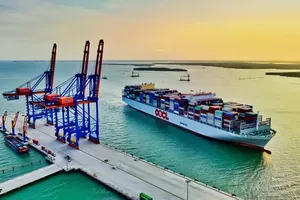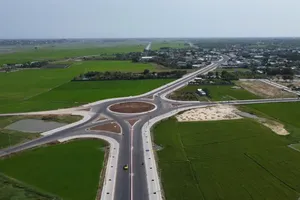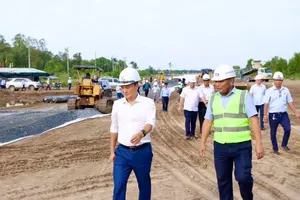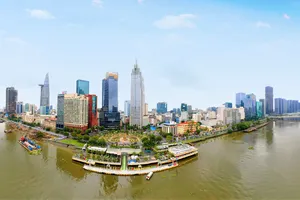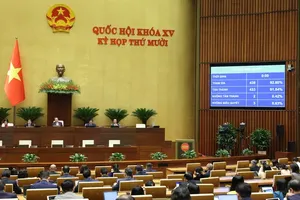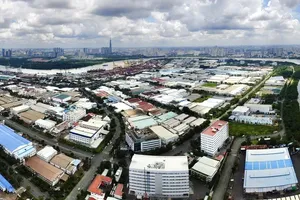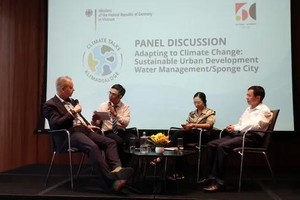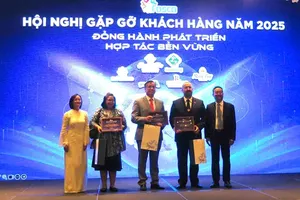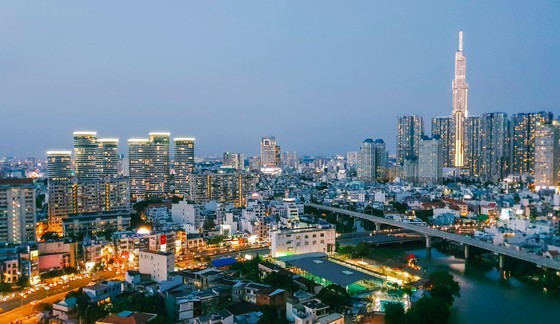 |
A corner of HCMC. (Photo: SGGP) |
Right in the fourth quarter of 2021, when the Covid-19 pandemic still developed complicatedly, Ho Chi Minh City issued the Economic Recovery and Development Program, marking a strategic transition from "Zero Covid-19" to "Safe, flexible adaptation and effective control of the Covid-19 pandemic".
Despite some imminent difficulties, with the economic recovery momentum in 2022, the city can still increase the gross regional domestic product (GRDP) by about 7.5-8 percent in 2023 if it focuses on solving bottlenecks to exploit the space for development.
Economic recovery amid barriers
The program for economic recovery and development of HCMC in the 2022-2025 period not only restores the economy but also accelerates the process of growth recovery associated with restructuring the economy towards competition, increasing the proportion of goods and services with high added-value, heading towards the goal of sustainable development. The program diverges the stages of recovery and identifies the self-recovery capacity of industries and services damaged by the Covid-19 pandemic to build appropriate solutions for each subject.
With the view that support will not be spread widely to avoid market distortions, solutions to support industries in the recovery period are selected following three criteria: (1) High contribution proportion in the city's GRDP structure; (2) High spillover effect; (3) Less likely to recover by itself. Immediately after being deployed, the program was promptly supported and supplemented by the central government's fiscal and monetary support policy through Resolution No.43/2022/QH15 of the National Assembly on January 11, 2022, and Resolution No.11/NQ-CP of the Government. The program, deployed to 2025, is designed with clear goals and solutions for two phases, which support short-term recovery and create a foundation for long-term sustainable development.
Specifically, phase 1: recovery (from November 2021 to the end of 2022): Overcoming the consequences, restoring the broken links in the production and supply chains; helping enterprises that temporarily suspended operations to re-enter the market and restore production and business activities; creating jobs and taking care of social security and socio-cultural activities on the basis of safe adaptation and effective control of the Covid-19 pandemic.
Phase 2: acceleration of GRDP growth (from 2023 to 2025): Continuing to control the pandemic effectively; solving the bottlenecks for rapid and sustainable development. Concentrating all resources to promote the city's strengths, which are economic and financial centers, trade and shopping centers, logistics services, tourism, innovation - science - technology, and high-quality services on health, education, and culture of the whole country and the Southeast Asia region.
By the end of 2022, the estimated GRDP of HCMC may increase by 9.44 percent compared to 2021, exceeding the target of 6.5-7 percent compared to the plan. Most of the fields and economic sectors recovered impressively. Specifically, the index of industrial production surged by 17.3 percent, of which, four key industries jumped by nearly 20 percent; the tourism industry rocketed by more than 170 percent; exports rose by more than 10 percent; agricultural production value gained by 5.8 percent; FDI attraction soared by 25.3 percent. State budget revenue in 11 months exceeded the estimate for the whole year.
However, from the fourth quarter of 2022, HCMC's economy has been negatively affected by the world and domestic economic situation. Impacts from the world included inflation, the appreciation of the dollar, interest rate hikes in the market, and the stagnation of major economies. Domestically, although it is necessary and beneficial in the medium and long term to establish disciplines in the financial and real estate markets, it has caused capital flows in the market to be disrupted. At the same time, the State Bank of Vietnam, with the priority targets to control inflation and stabilize the exchange rate, raised interest rates and controlled credit flows, leading to a decrease in investment and an increase in financial costs in investment projects.
In the manufacturing sector, industries, such as leather and footwear, textiles, and household wood, will all face a drop in the number of orders in 2023. Many enterprises produce in moderation, reduce labor, and cut working hours. The construction industry will remain stagnant because real estate projects are congested, and public investment is deployed slowly. Besides, the bottlenecks in capital absorption have not improved significantly. It can be said that the city is facing two big difficulties. Specifically, the industrial growth rate tends to decrease gradually, and many enterprises reduce production and cut laborers due to a shortage of orders. Financial and real estate markets are unstable and tend to stagnate.
With the above situation, HCMC can only set the target of preventing the risk of a slowdown in economic growth in 2023 instead of accelerating the growth rate as the economic recovery program has set out. However, despite the imminent objective difficulties, the city still has a lot of room to exploit and develop. To prevent the risk of an economic slowdown in 2023, the city needs to overcome two immediate problems which are: institutional bottlenecks need to be removed to absorb investment capital from all economic sectors, and the government must actually accompany businesses to strengthen the market's confidence.
Identifying challenges, concentrating on exploiting growth space
Up to now, there are still many challenges that have existed for years for HCMC. In the medium and long terms, the quality of economic growth has not reached the target. Economic restructuring, especially within economic sectors, is extremely slow. High-tech applications in production, the establishment of linkages between domestic and FDI enterprises, supporting industries, and participation in the global value chain are not commensurate with the role of the city and have not achieved the target to increase the quality of growth and create spillover effect to the Southern Key Economic Region. The operation of industrial parks, export processing zones and high-tech parks has not had any breakthroughs and has not yet attracted multinational corporations. In general, the economy in the city is not much different from other localities in the region, so it cannot show the general development lead.
 |
A view of HCMC from Thu Thiem to the city's center. (Photo: SGGP) |
In addition, technical and social infrastructure is increasingly inadequate. The city still has too many long-lasting problems, even decades, that have not been completely resolved. Traffic infrastructure is seriously overloaded day by day. Along with pending projects, the situation in which large infrastructure projects that do not face capital crunch are implemented slowly has greatly affected the overall development. In terms of social security, programs, such as handling houses on and along canals, handling old, degraded apartment buildings, and housing for workers, have been carried out too sluggishly compared to the set targets. The problems of traffic congestion and flood control in the past 20 years have always been among the key breakthrough programs of the city. However, the situation has not improved much, but even more serious in some places.
Moreover, the city has not yet exploited the strengths of the science and technology center to improve productivity and development quality. The policy of building a creative start-up center has not yet yielded results over the years. The government's support in the digital transformation process of enterprises has not made any significant change. Especially, bottlenecks in administrative procedures hinder the absorption of investment capital in both the public and private sectors. In administrative reform, the city used to take the lead in applying the "one-stop shop" mechanism and e-government, but so far, it is still behind many localities, especially online public administrative services. The Provincial Competitiveness Index (PCI) remains around 14th-15th place out of 63 provinces and cities and has barely made progress over the years. The public duties of the administrative apparatus at all levels still have many weaknesses that must be overcome.
For Ho Chi Minh City's economy to increase GRDP by 7.5-8 percent in 2023, the city needs to focus on removing bottlenecks to quickly absorb investment capital, through improving the public duties of the administrative apparatus at all levels; accelerate the implementation of key urban infrastructure projects; create a breakthrough in the programs of digital transformation and the development of the knowledge economy associated with exploiting the potential of science and technology, and improving the quality of growth.
Specifically, the city needs to focus on measures to limit the risk of a decline in the GRDP growth, such as supporting enterprises in the export industry, including FDI enterprises, construction, and tourism; stimulating domestic consumption demand; expanding night economic activities; diversifying entertainment activities and MICE tourism; developing a special program on consumption demand stimulus; coordinating with associations to organize of trade promotion activities.
Especially, the city needs to review the progress and remove obstacles to speed up the implementation of projects under the breakthrough program to innovate city management in the field of digital transformation and digital technology application, such as the smart city construction project for the 2017-2025 period, digital transformation project in HCMC, the project of establishing and developing a highly interactive creative urban area in the East of the city in the 2020-2035 period. At the same time, it needs to develop a roadmap and implementation solutions for the goal of completing the digital government in 2025 and the goal of rapidly increasing the proportion of the digital economy in the city's economic structure. HCMC also needs to transform its thinking from a local economy to a regional one, in which it is linked with neighboring provinces, such as Binh Duong, Dong Nai, and Ba Ria - Vung Tau, forming an urban-industrial belt, a regionally-connected transport system, and regional development linkage mechanism.

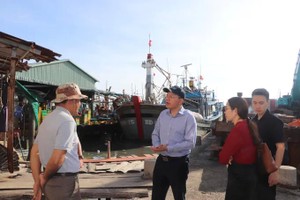
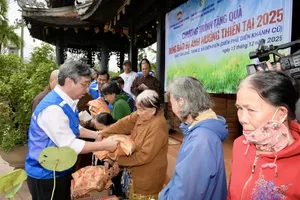


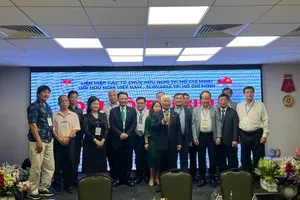

)
